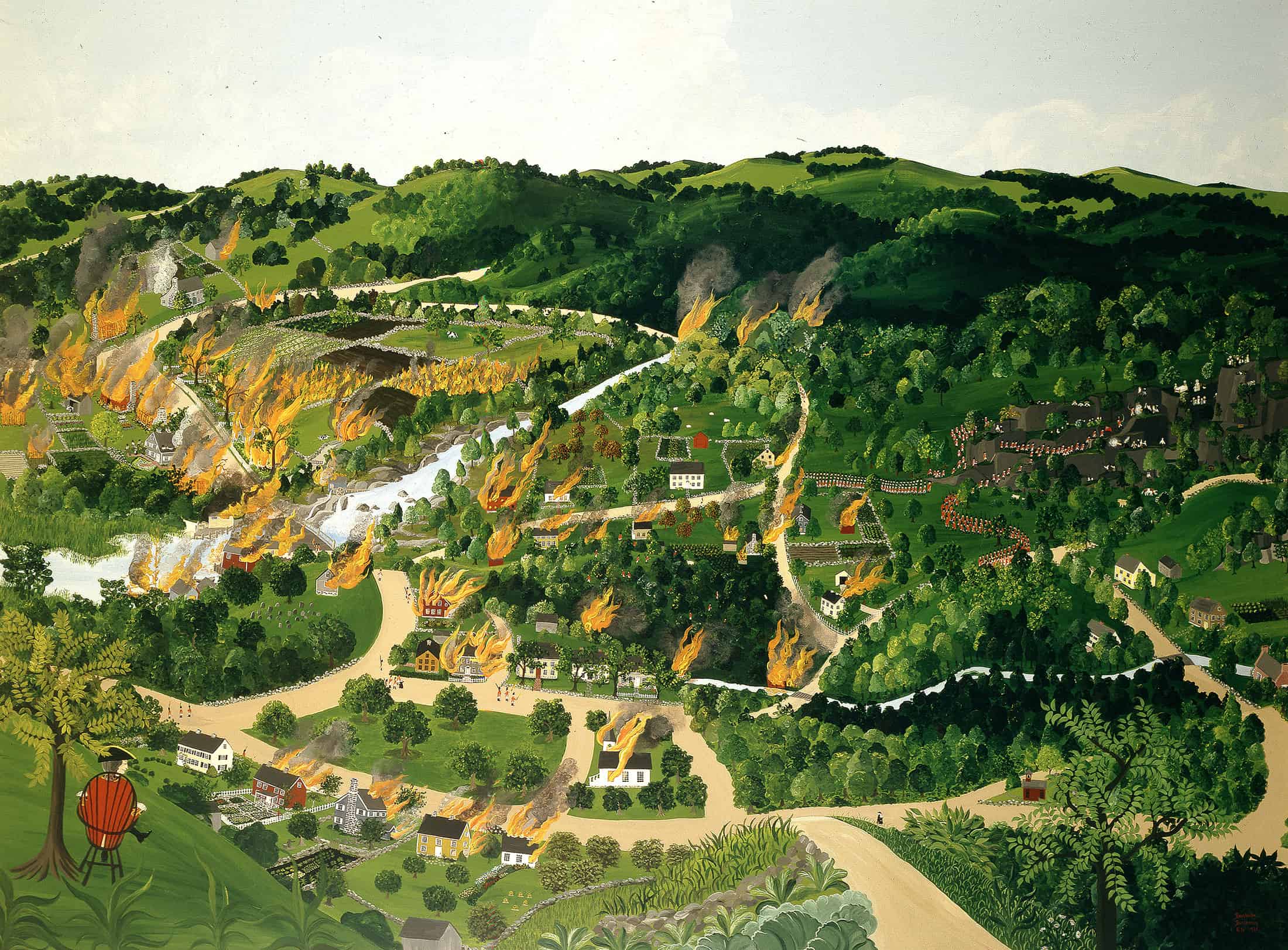
Why was Norwalk Burned?

On July 3, 1779, General William Tryon with Sir George Collier’s fleet, left New York with orders to raid towns on the Connecticut coastline. This was part of a plan designed by British General Henry Clinton, to lure George Washington from his safe position on the Hudson to defend Connecticut. The hope was that General Clinton could decisively defeat the Americans, once Washington was dislodged from his stronghold.
The raids were partly in retaliation for the frequent attacks by Connecticut privateers on the Tory and British ships. In addition to other troops, General Tyron brought along the King’s American Regiment, which was made up of New York Tories. Clinton’s orders were to raid the stores and destroy rebel supplies. There was no mention of burning the private homes and property of the citizens.
The raids were termed a strategic failure. Washington saw through the scheme and did not rush to defend Connecticut. Clinton had drawn off part of the troops at Stony Point to provide Tryon with men, leaving a weak garrison. On July 15-16 American General Anthony Wayne successfully captured Stony Point, greatly boosting the morale of the American troops.
The question, still not answered two centuries later, is: did Tryon act on his own by making war on private citizens or was he following orders? Clinton claimed that Tryon acted “contrary to his orders.” Tryon insisted that Clinton was trying to change his orders after the fact. Clinton knew that Tryon believed in warfare on private citizens and he knew that angry Tories were to be part of the raiding troops. A friend of William Tryon later said, “Sir Henry wished the Conflagrations, and yet not to be answerable for them.”



